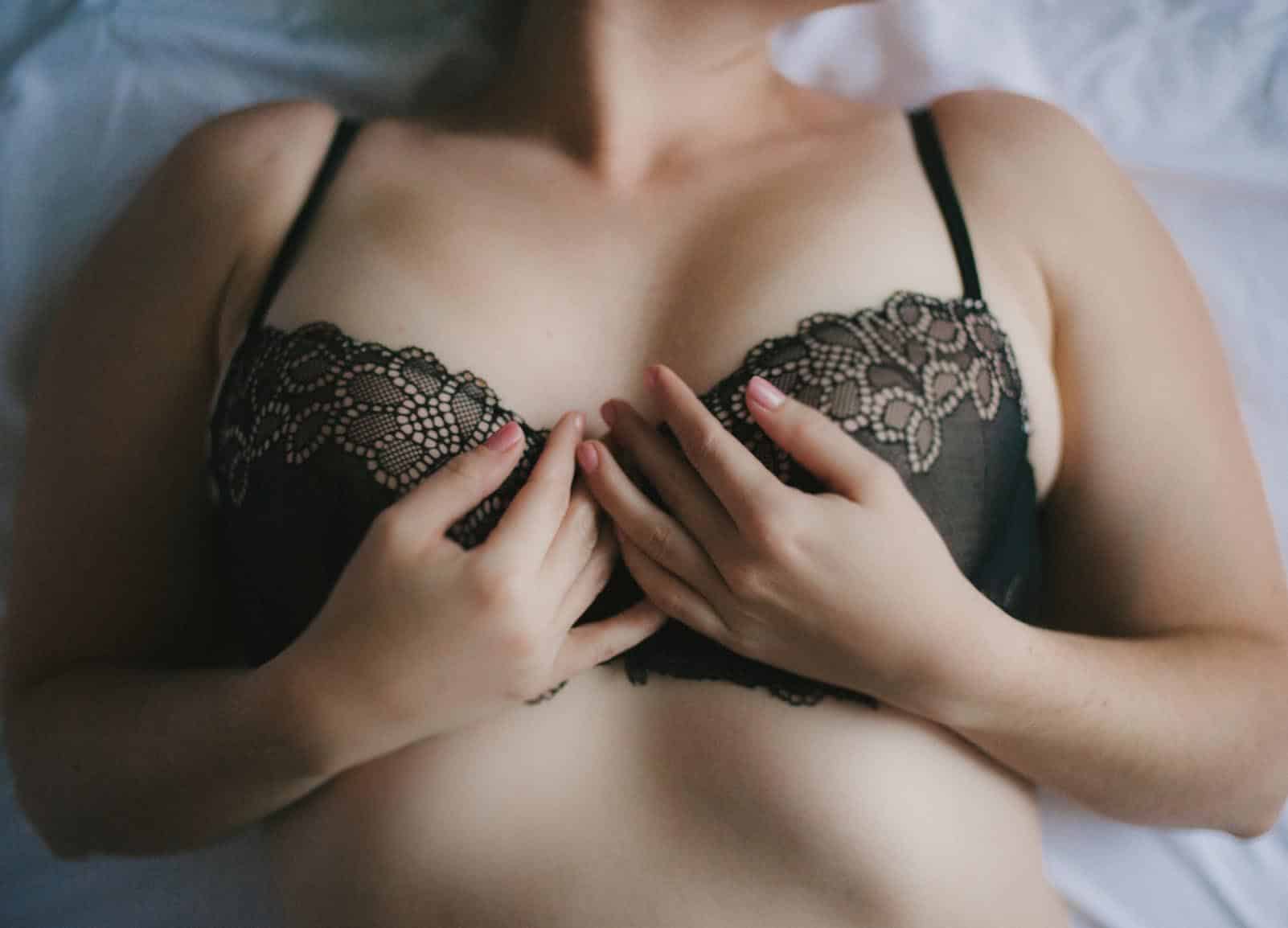In a mind-bending bit of irony, when women get a breast lift surgery, they’re often hoping that their after will, in a way, resemble their before—an earlier version of themselves, the chest they had before their pictorial before. “If we’re lifting a breast, it’s typically because the tissues went through some type of change,” says Dr. Ran Stark, a board-certified plastic surgeon in Bryn Mawr, Pennsylvania. Pregnancy and breastfeeding, weight loss and fluctuations, and aging can all cause our breast skin and ligaments to stretch and sag, elongating and sometimes flattening the breast and sending nipples floorward. So “when a patient comes in for a mastopexy,” he adds, “the goal is usually to restore her breasts to their former shape and to make her look like she did before”—before her chest was remodeled by babies, gravity, hormones, and the like.
In good candidates, reclaiming what was lost requires a series of strategic cuts—to reposition and possibly resize the nipple-areolar complex; to remove excess skin and tissue; and to raise, redistribute, and reshape the breasts (this can be done with breast implants too). Each incision achieves a specific objective—and leaves an unavoidable mark. The extent of your procedure (and scarring) will depend primarily on your degree of breast ptosis (droopiness) and skin elasticity, so it’s important to set realistic expectations during the consultation.
“A periareolar, or ‘donut,’ mastopexy involves an incision around the areola and is for patients who have minor sagging and/or want to reduce their areolar size,” explains Dr. Umbareen Mahmood, a board-certified plastic surgeon in New York City. For women with moderate to severe sagging, there’s the vertical lift, often called the “lollipop” lift since the requisite incisions—around the areola and straight down the center of the breast—take the shape of the namesake treat. When a patient has more significant sagging or is seeking a simultaneous reduction, adds Dr. Mahmood, surgeons may perform a wise pattern, or “anchor,” lift, making cuts around the areola, vertically down to the breast fold, and horizontally along the breast crease.
While scars tend to jump out at us first when we’re perusing plastic surgery before and after photos, their size and placement are not the only indicators of a masterful-versus-mediocre breast lift. Ahead, plastic surgeons share what makes them swoon (and cringe) when they’re scrolling through breast lift B&A galleries.
1. Scars that are short and well-hidden
Fine scars are a point of pride for most plastic surgeons. So when they make and close incisions during a breast lift, they’re aiming for short, thin, perfectly placed lines. Surgeons are not the sole architects of scars, however: our bodies play an equal part in how well we scar, with “darker skin types tending not to heal quite as well as lighter skin,” notes Dr. Stark. Still, he says, “given a year or two, [breast lift] scars typically really do heal nicely—especially the vertical scars—and tend to fade almost to the point that you don’t see them anymore.”
It’s not unheard of though for the horizontal incision to extend too far in one direction or the other. “I personally scoff at long scars that show near the sternum [at the center of the chest], as they are almost never necessary,” says Dr. Lisa Cassileth, a board-certified plastic surgeon in Beverly Hills, California. Plunging necklines put these scars on full display. Similarly, when a surgeon takes the incision too far out the opposite way, it can fail to stay hidden in the breast crease, leaving you with a “visible scar on your lateral chest,” adds Dr. Stark. Keeping scars short helps ensure they won’t peek out of swimsuits and low-cut tops.
Incisions around the areola tend to blend well into the pigmented skin, but when repositioning or resizing nipples, surgeons should take care to keep them symmetrically circular. “When surgeons are fixing the areola and it’s not a perfect circle, sometimes it teardrops—and that’s not a good look,” says Dr. Stark. This typically results from an irregular cut or too much of a downward pull on the areola when it’s being sutured closed.
Related: Expectation vs. Reality: 5 Women Share What Their Breast Augmentation Recovery Was Really Like
2. Round, elevated nipples that are proportionate and symmetrical
“One of the main hallmarks of a beautiful breast lift is nipples that are symmetrically level and in an appropriate position on the breast mound, so not too high—what we call ‘stargazing’—and not too low,” says Dr. Mahmood.
According to Dr. Stark, ideal proportions are relatively textbook: roughly 45% of the breast should sit above the nipple, with the remaining 55% comprising the underboob, from nipple to crease.
While nailing nipple position may seem like a fairly straightforward cut-and-paste situation, the rearrangement is infinitely more complex. “The most successful breast lifts keep the nipple attached to the breast tissue so the nipple appears to be moved to a higher position, but actually, the excess skin above the nipple is just removed,” explains Dr. Cassileth. During surgery, the nipple is left attached to a stalk of tissue that contains crucial nerves and arteries, she says, “which means your nipple can feel after the surgery and has great blood flow.”
While nipple placement is key to balanced-looking breasts, surgeons also aim to ensure that the whole of the areola is proportionate to the breast itself—a somewhat more subjective assessment, says Dr. Stark, since patients may prefer smaller or larger areolas, regardless of whether this suits their overall breast size. Generally though, 38 millimeters in diameter is “a pretty good, proportionate areola for most women,” he notes.
3. A youthful breast shape
Surgeons often describe the desired breast shape as “beautiful” or “youthful”—but what specific elements combine to make it so? When pressed for particulars, Dr. Mahmood paints a picture of “a slightly convex or even straight-sloped upper breast, a smooth curvature near the midline creating a beautiful décolletage, with breasts that sit in the midline of the chest—not too far toward the [armpit] and not touching in the middle—and more fullness of the medial breast versus lateral heaviness.” Such are the makings of pert, projected breasts.
What you don’t want post-lift are breasts that look boxy, adds Dr. Stark. “That’s a really obvious sign that a patient had surgery.”
While surgeons use different techniques to achieve optimal results, Dr. Cassileth believes that “a truly great breast lift actually positions the breast tissue higher and doesn’t just rely on removing and tightening skin to lift the breast.” To elevate her outcomes, she fashions a sag-proof pocket out of the pectoral fascia—the brawny connective tissue covering the muscle—to hold the breasts in a higher position. “This really allows the breast to be full, without an implant, and allows me to control the position and create a beautiful shape—not just [repackage] the old breasts in slightly tighter skin.”
4. A clean backdrop
“Beautiful breasts sitting on a wide, fatty chest don’t look as good [as they could],” says Dr. Cassileth, which is why she almost always liposuctions away bra fat during breast lifts, “unless the patient is truly thin in these areas and doesn’t need it,” she says. Some strategic lipo can have a portrait-mode-like effect on the overall result—sharpening the subject by taking the focus off the background. In many cases, fat transfer can be done at the same time if patients are looking for volume enhancement in other areas.











